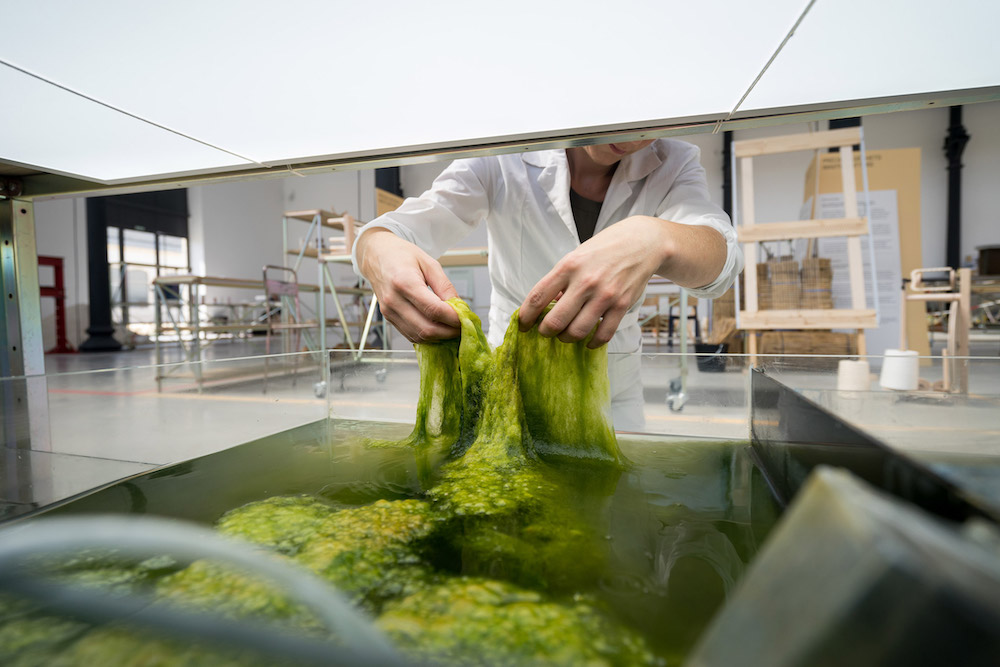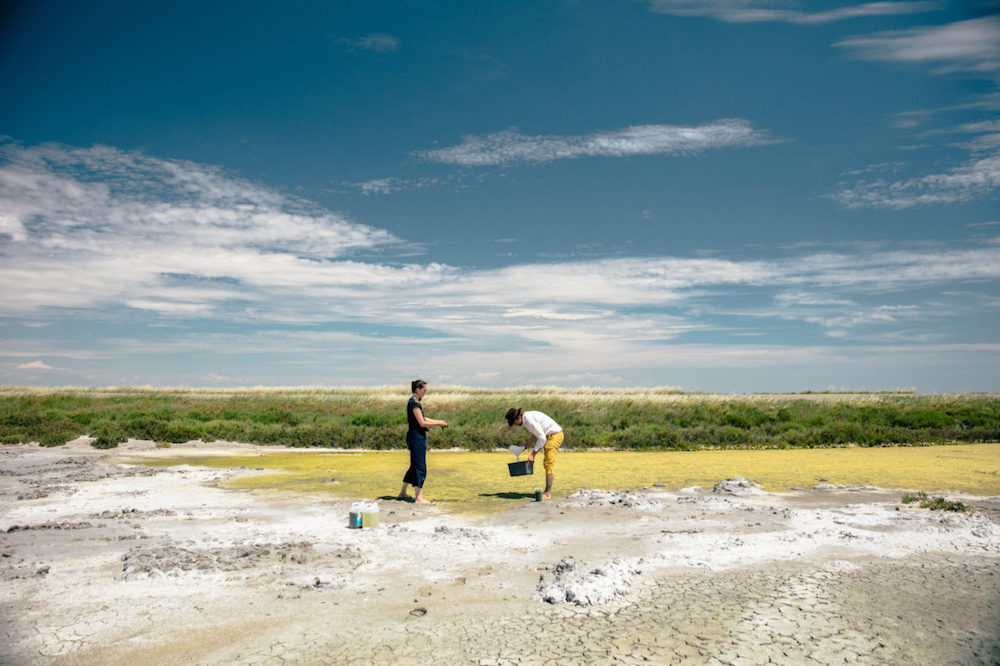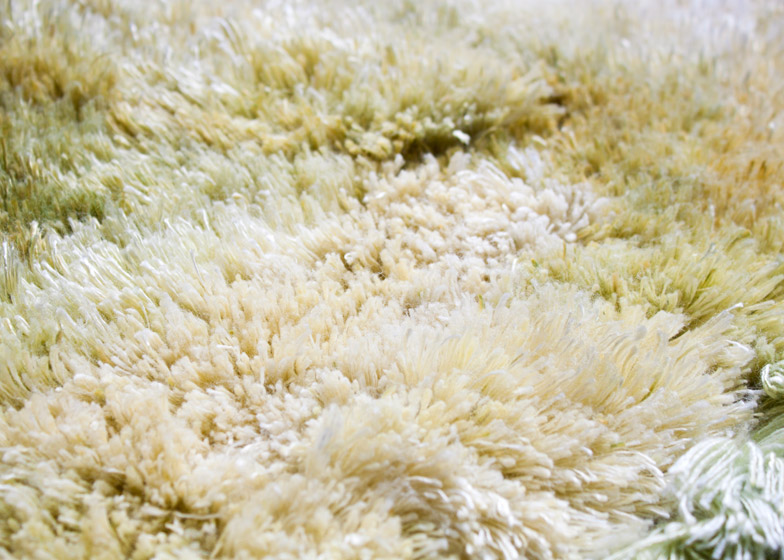Exploring the potential of algae
ho
How the Royal Academy of Arts, Atelier Luma and MATERFAD are exploring the future of algae in design and architecture.

Ink and dyes, yarn, sneakers, food, fertilizer, bioplastic products, packaging and 3d printing filament, tiles that clean polluted water, facades and roofs that clean the air, and even algae-powered buildings. The possibilities of algae for design and architecture seem to be endless and promising, but are they scalable? This was one of the underlying questions in a recent panel held at the Royal Academy of Arts in London on occasion of the end of a residency that the designer Samuel Iliffe has undertaken at the Architecture Studio of the London institution as part of The Algae Platform, a project by Atelier Luma.
The panel, curated by Gonzalo Herrero for the architecture programme parallel to the exhibition Eco-Visionaires: Confronting a planet in state of emergency was chaired by Jan Boelen, Artistic Director of Atelier Luma and Rector at the Karlsruhe University of Arts and Design and counted with the participation of Nancy Diniz, architect and partner of bioMatters and course leader of the MA in Biodesign at Central Saint Martins; Samuel Iliffe, material designer trained at the Royal College of Art and Imperial College London; Dr. Brenda Parker, Lecturer in Sustainable Bioprocess Design at the Department of Biochemical Engineering, UCL and Director of the MSc Bio-Integrated Design in collaboration with the Bartlett School of Architecture and Seetal Solanki, materials designer, researcher, founder and director of Ma-tt-er.

In this article we share the keys of The Algae Platform project by Atelier Luma, Samuel Iliffe’s residency at the Architecture Studio, and the knowledge that MATERFAD, our centre of Materials, has regarding the material applications of algae.
What is the Algae Platform?
The Algae Platform was launched at Atelier Luma in 2017 to explore the potential of macro and micro-algae as an alternative biomaterial solution with applications for design and architecture that can replace fossil oil-based plastics. Since its foundation, the platform has expanded to different countries across the Mediterranean region and beyond, with pilot projects held in Istanbul, Cairo, Sardinia, Milan, Belgium and the Balkans. Each iteration aims to promote local knowledge about algae production as a sustainable alternative building and design material.
What is Atelier Luma?
Atelier Luma is a think tank, a production workshop and a learning network of the Luma Foundation. Based in Arles, in the Camargue region, Atelier Luma wants to co-develop new ways of producing and caring for a city and a bioregion, using design as a tool for transition. Since its foundation in 2016, Atelier Luma conducts projects connected to six strategic themes: Waste Matters, Producing (in) the City, Healthy Mobility, Next Hospitality, Food Circle, Circular Education. The Algae Platform is one of these projects.

Could we grow micro-algae from human waste?
The fact that microalgae have so much potential as a material, made Samuel Iliffe wonder how could we cultivate it in scale and in a sustainable way that wouldn’t put pressure on the environment. This led him to think of human waste as a possible solution. Micro-algae thrive on urine, and they are a possible source of proteins and other biochemicals, as well as biofuels and fertilisers.
What are some material applications of algae today?
According to Robert Thompson, Scientific Director at MATERFAD, algae have diverse material applications and potential given that they have the ability to photosynthesize like plants but are waterborne, thus can be used in a variety of secondary applications such as the production of electricity and the filtration of air pollution via the absorption of CO2, NO and CO. Other than that, algae is being used to generate organic matter fillers in other material agglutinants and it is a source for Chitin production, which is a biodegradable biopolymer.
MATERFAD has various examples of these algae applications in their materials database and provides training in various areas of design and technology applications of these materials.
Text: Sol Polo